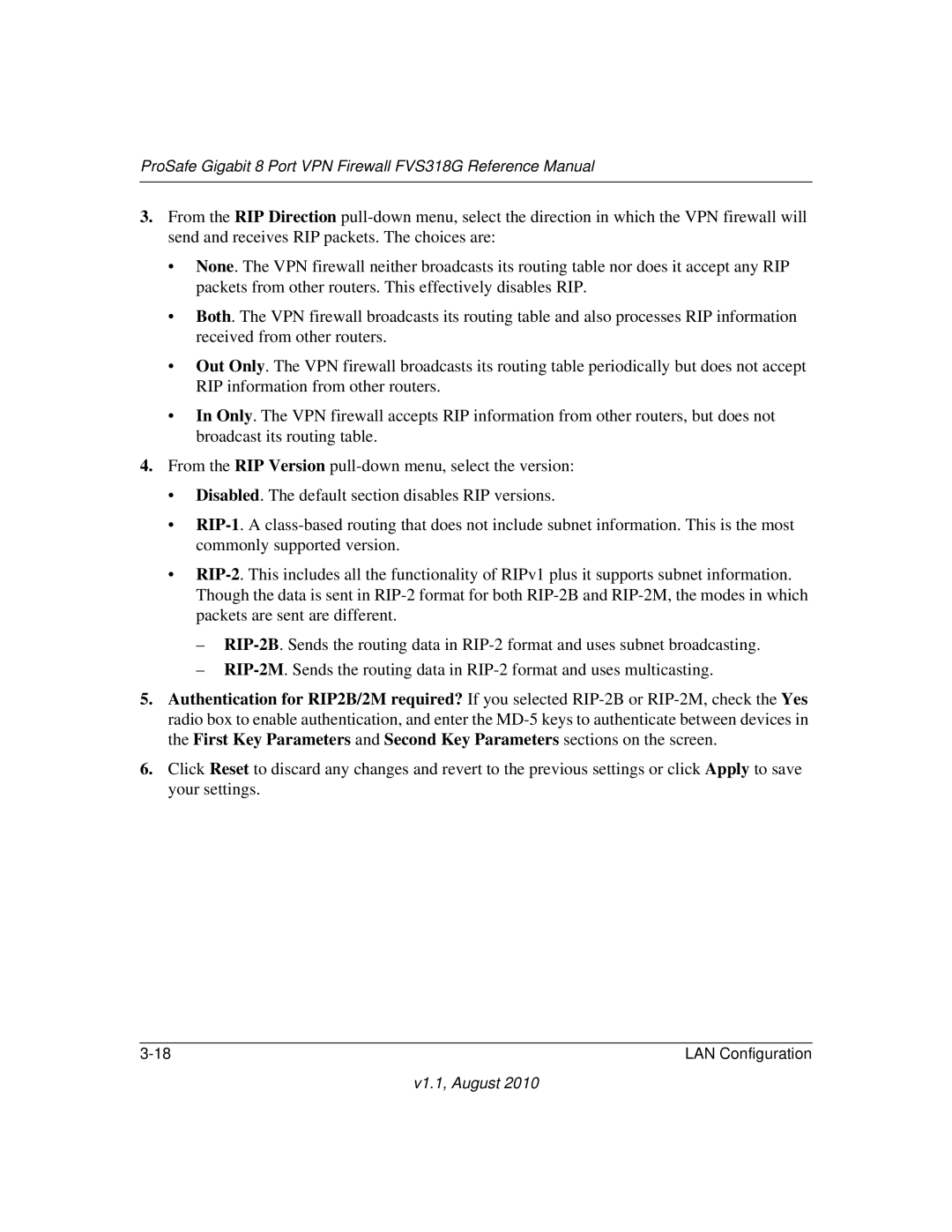ProSafe Gigabit 8 Port VPN Firewall FVS318G Reference Manual
3.From the RIP Direction
•None. The VPN firewall neither broadcasts its routing table nor does it accept any RIP packets from other routers. This effectively disables RIP.
•Both. The VPN firewall broadcasts its routing table and also processes RIP information received from other routers.
•Out Only. The VPN firewall broadcasts its routing table periodically but does not accept RIP information from other routers.
•In Only. The VPN firewall accepts RIP information from other routers, but does not broadcast its routing table.
4.From the RIP Version
•Disabled. The default section disables RIP versions.
•
•
–
–
5.Authentication for RIP2B/2M required? If you selected
6.Click Reset to discard any changes and revert to the previous settings or click Apply to save your settings.
LAN Configuration |
